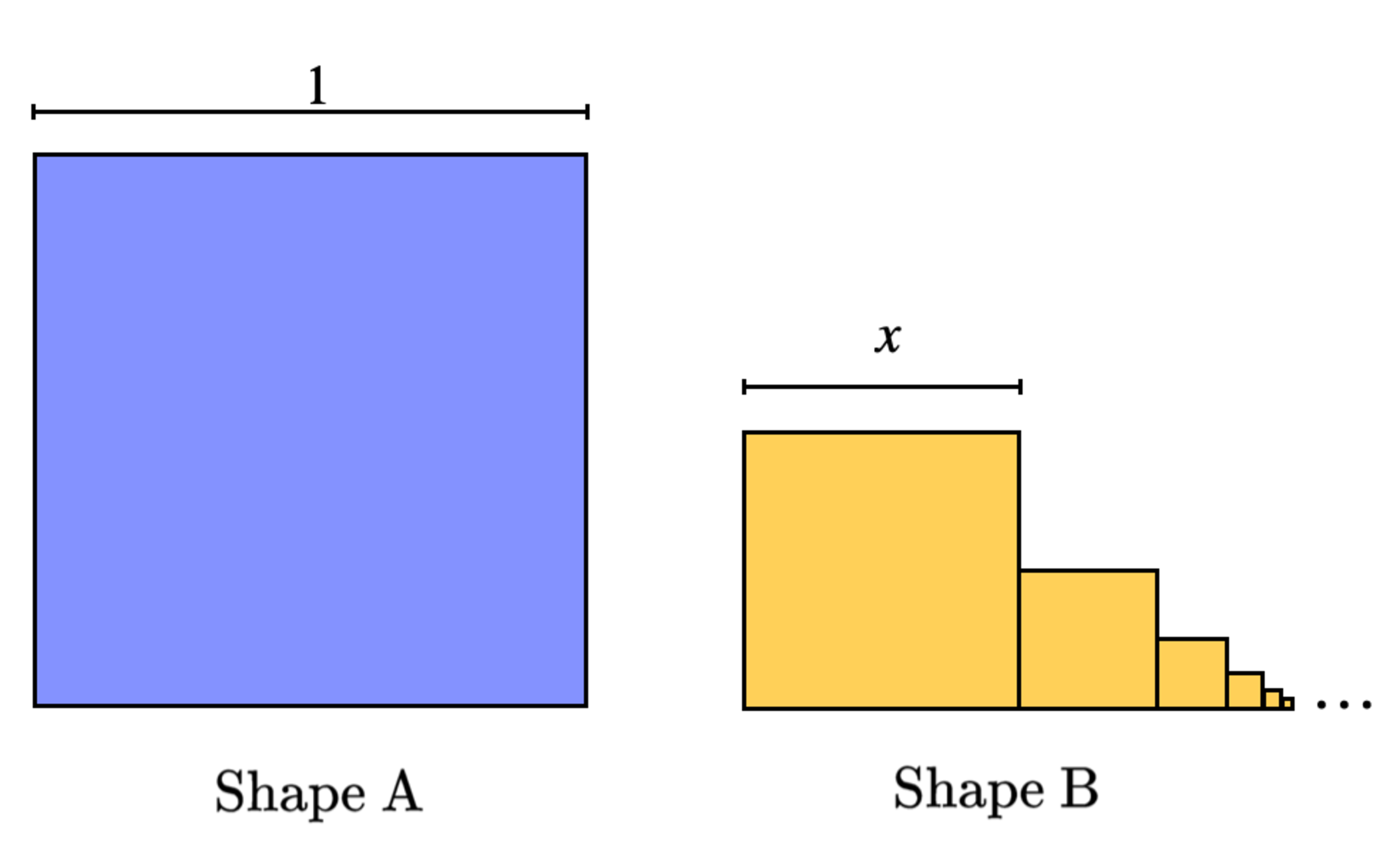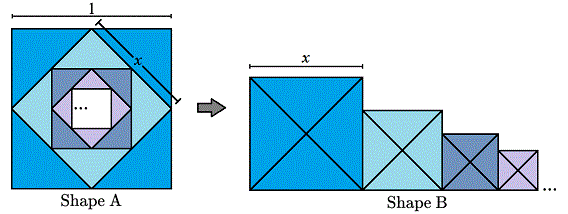Lots of Squares or One Big One?
There is a square in Shape A, and infinite squares in Shape B. Each additional square from left to right forms a converging geometric progression of areas.
If the area of Area of Blue Shape = Area of Yellow Shape , what is the value of x to three decimal places?

The answer is 0.707.
This section requires Javascript.
You are seeing this because something didn't load right. We suggest you, (a) try
refreshing the page, (b) enabling javascript if it is disabled on your browser and,
finally, (c)
loading the
non-javascript version of this page
. We're sorry about the hassle.
2 solutions
This question, as stated, may not be well-defined. For example, the sequence x^2, (rx)^2, (r^2x)^2, (r^3 x)^2, ... is also a convergent geometric progression of areas. But the total area would then depend on r, the only requirement being that 0 < r < 1. For a specific example, if the side length of each square decreases by half (r = 1/2), then the answer to this problem would be x = 0.866.
Log in to reply
I don't clearly understand what you are trying to say.. Though from whatever I understood, it is given that area of Blue and Yellow is equal. Thus only one type of G.P. should exactly equal the area fo blue which is 1... and that series is 1/2 + 1/4 + 1/8 + 1/16. In this case x^2 = 1/2. Which means x = 1 / 2 = 0.707
I was just trying to argue that your problem has one free variable: the geometric ratio, r. In your solution, you are saying that the geometric ratio (side length ratio) is r = x. This makes for an interesting solution, but it is not the only solution.
Oh... I see. You are saying that the ratio is x (moving from blue to yellow square on the right). Sorry, I didn't catch that.
Using the following pattern of triangles, Shape A can be divided in half, then the remaining area can be divided in half again, and that remaining area can be divided in half again, and so on, and those triangles can be rearranged to make the different squares in Shape B:

Each square follows a geometric progression by a ratio of 2 1 , and x solves to x = 2 2 ≈ 0 . 7 0 7 .
@David Vreken Great solution and Thanks!!
Thanks for this solution! I wouldn't have understood this question without your help...
Area of Blue Shape 1 1 1 − x 2 1 x 2 x x = Area of Yellow Shape = x 2 + x 4 + x 6 + x 8 … = 1 − x 2 x 2 Sum of converging G.P. = x 2 = 2 x 2 = 2 1 = + 2 1 , − 2 1 = + 2 1 [ ∵ x = − v e ]
x ≈ 0 . 7 0 7